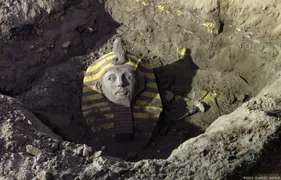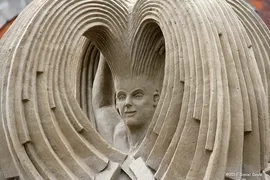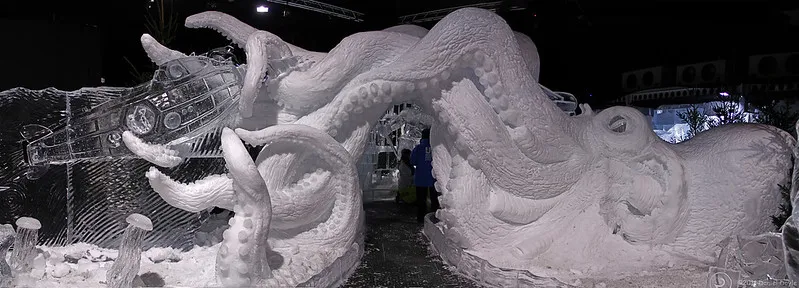
I'm going to head this one off at the pass and say I know that this should actually be a squid and not an Octopus. In the book, it was a giant squid but for 'artistic' reasons we felt an octopus would be more interesting due to textures and forms and fitting the composition better. Sure, unless you are a malacologist you probably will let this slide, or slidder as the case may be!
I read Jules Verne's book when I was quite young and I think it began my love of diving and exploring the deep. It is amazing how little we still know of the sub-aqua world and sometimes I find it strange our obsession with space when we still have so much to discover in our own backyard.
Lets get the band back together
This was a snow and ice sculpture that I was very happy to make at the 2011 Zwolle ice festival in the Netherlands. Based on a scene from the book where the Nautilus Submarine is attacked by a gigantic squid I was teamed up with Martijn Rijerse, you may remember him from such sculptures as The Devils mill. It was nice to be back working with him as he has a great work ethic that I could learn a lot from. The sculpture was to be an entrance arch into the ice exhibition and they wanted us to do something about this book.
Chopping and changing
I wish I had some pictures of the snow and ice blocks we started with as you would have a better idea of all heavy lifting we had to do to give us a nice composition to work with. We started with the big wall of snow and began by finding a logical place for the archway, Cutting this out gave us a nice block of snow that we could then use for tentacles extensions and making the head of the octopus. That was actually just a hollow ball, to save snow.
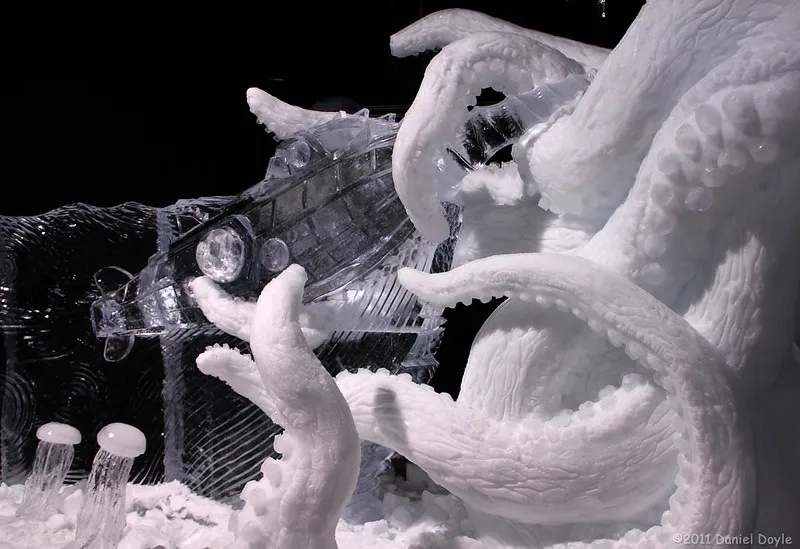
The Nautilus itself, which was made from the ice wall, also took some creative shifting around to give it form. Little details were also added like the screw at the front. The whole thing was actually carved half in and half out of the wall with the tail negatively carved to the back of the block. I imagine that all this is a bit complicated to understand but just know that working out how to change the block layout can be very heavy work even before you even begin carving.
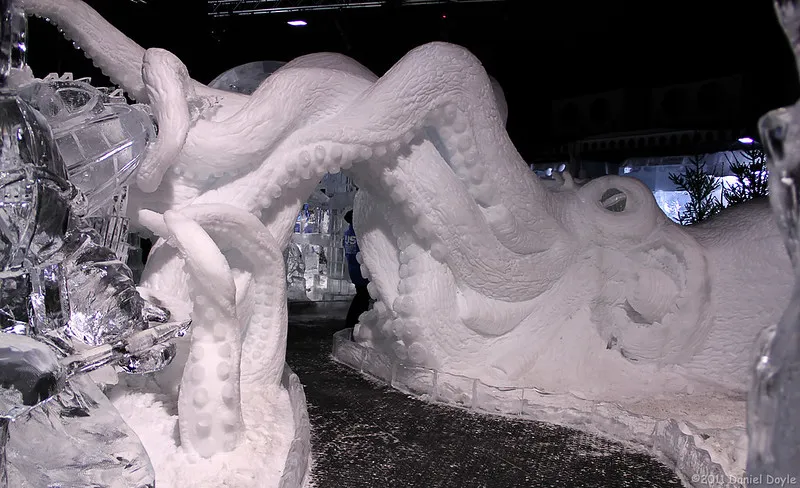
Finding a nice flow to the tentacles was fun, we tried to make them look more massive than they were due to the thinness of the snow wall. Cutting bits from here and shifting them over to there was the name of the game or as you would probably better call it: Tetris.
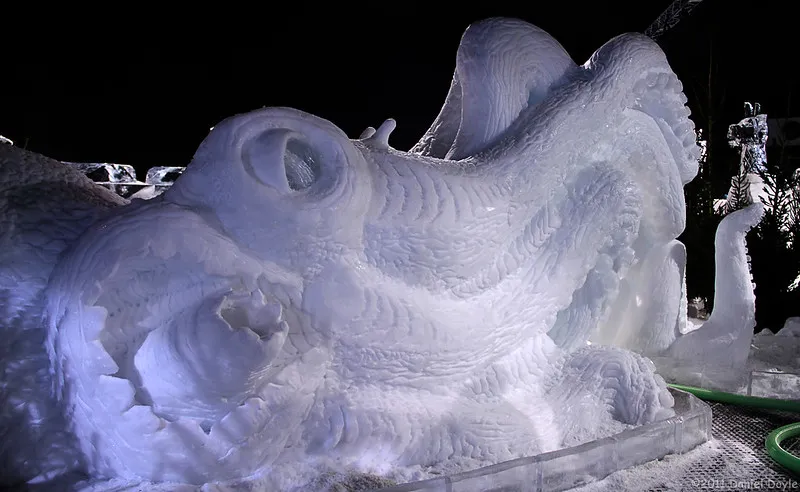
There were some compromises on the other side of the sculpture which looked altogether quite flat. But in general, the audience is mostly looking forward as they move through the exhibits and for us having the front more interesting was the choice we had to make.
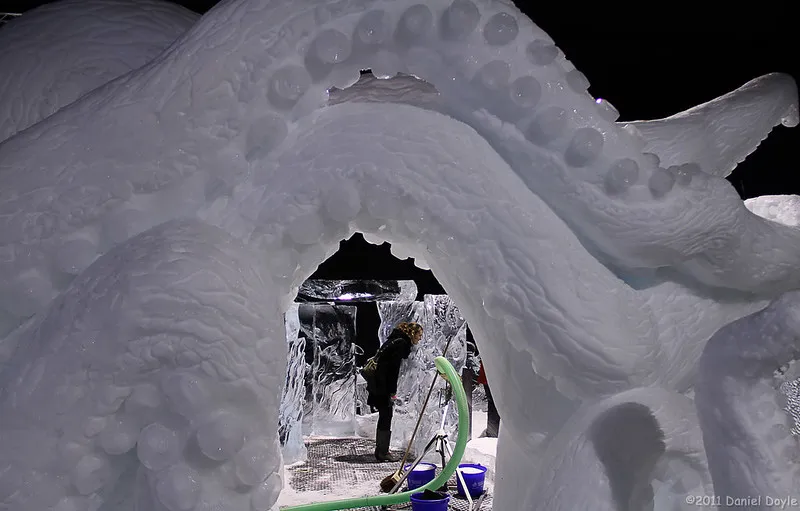
Suckers
For the suckers, we used white ice which we first made into long cylinders and then cut like carrots. Adding these little nubbins added nice detail and also helped add to the form. When you are working with snow the silhouette is the most important thing due to the lack of light and shade contrast and these suckers helped in achieving a more interesting one.
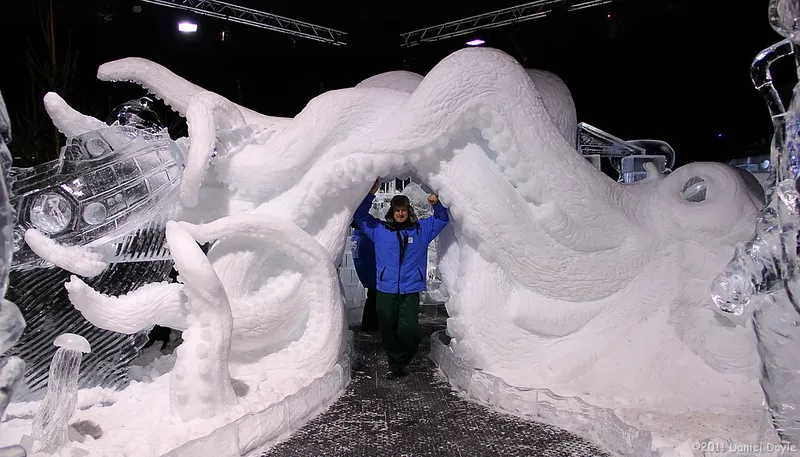
I include this image for a sense of scale and not because I think I look like an intrepid explorer lifting up a curtain of tentacles reminiscent of a hero from the book. Not at all!

Ps
Thanks for reading. I use PeakD to document my work as an ephemeral Sculptor of sand, snow and ice, amongst other things. This will hopefully give it a new life on the Hive Blockchain. Below you will find some of my recent posts.
Pharaoh dig - sand sculpture
Female Evolution - sand sculpture
Poles Apart - sand sculpture
I hope you'll join me again soon
@ammonite
If you would like to support me
Bitcoin: bc1qp4lfg0ttz66nesgff8fd5unglg9y0l2jy53j36
Ethereum: 0x6abaE039b9BDFB67495A0588cb90F9EAF5f7556c
Eos: ammonitearts


